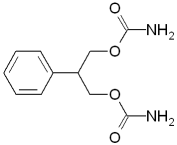In the last few years, several widely promoted drugs have been removed from the market because of rare and severe liver toxicity. For example, Rezulin, a drug for type 2 diabetes, was withdrawn last year after it was found to have caused 90 cases of liver failure, including 63 deaths. A rare side effect usually does not become evident until a few years after the drug is on the market and hundreds of thousands of people have taken it; whereas, the premarket testing required by the Food and Drug Administration (FDA) usually involves, at best, a few thousand study participants. Finding a rare drug side effect is complicated further by the fact that fewer than 10% of all adverse drug reactions are reported to the FDA.
Serious drug-induced liver injury is now the leading cause of removal of a drug from the market. The liver damage usually occurs with little or no advance warning, though in the case of Rezulin, signs of drug-induced toxicity in the premarket testing phase were ignored because they were not severe enough. A rare side effect can affect a large number of people once you consider that the risk is associated with a wide range of commonly used prescription and non-prescription drugs, as well as herbal products. Over 1,000 people in the U.S. die yearly of drug- induced liver failure. Many more are hospitalized, and some require a liver transplant.
To find ways of averting such tragedies, a conference was held early this year, called "Drug-Induced Liver Injury: A National and Global Problem," sponsored by the FDA, the Pharmaceutical Research and Manufacturers of America, and academic consultants from the American Association for the Study of Liver Diseases. The abstracts and background papers from this conference have been made available on the FDA's Web site (www.FDA.gov/cder).
Emphasis was largely upon how to test for and identify early signs of liver toxicity during the premarket testing phase. Addressing the conference, the FDA's Robert Temple, MD, said, "Post-marketing surveillance now detects serious hepatotoxins in months, in marked contrast to the years of delay of the past, but it's obviously preferable to discover them before marketing."
The FDA is searching for ways to reduce injuries associated with acetaminophen (Tylenol), a drug whose well-documented risk of liver damage is entirely predictable. Damage severe enough to cause death or require a liver transplant will occur in people who intentionally, or accidentally, take acetaminophen in higher than recommended doses (no more than 1,200 mg/day), especially when associated with alcohol. People who regularly drink three or more alcoholic drinks daily and those who have not eaten for a long period of time are most likely to suffer acetaminophen- induced liver damage.
The FDA takes different avenues of public protection once a drug is known to be a rare cause of liver injury. The agency can withdraw the drug (e.g., Oraflex), mandate a warning box on the label (e.g., acetaminophen), or severely restrict usage (e.g., the antibiotic, Trovan).
Other Drugs That Can Damage the Liver:
This is a partial list of drugs and herbs that can, though rarely, cause liver injury. It was compiled by the FDA Center for Drug Evaluation and Research.
Niacin (nicotinic acid) for cholesterol-lowering;
Isoniazid (has a dozen other brand names: Laniazid, Nydrazid) for tuberculosis;
Normodyne (other brand names: Normozide [CD], Trandate), a beta- blocker for hypertension;
Cylert for attention deficit disorder;
Lamisil, Nizoral, Sporanox for fungal infections,
Felbatol for epilepsy;
Zyflo (other brand names: Montelukast, Singulair, Zafirlukast, Accolate, Zileuton) for asthma;
And Tasmar for Parkinson's disease.
Herbs that may cause liver damage include chaparral, comfrey, valerian, ma huang, and pennyroyal.
--
Maryann Napoli is the associate director of the Center for Medical Consumers in New York City.
COPYRIGHT 2001 Center for Medical Consumers, Inc.
COPYRIGHT 2001 Gale Group



